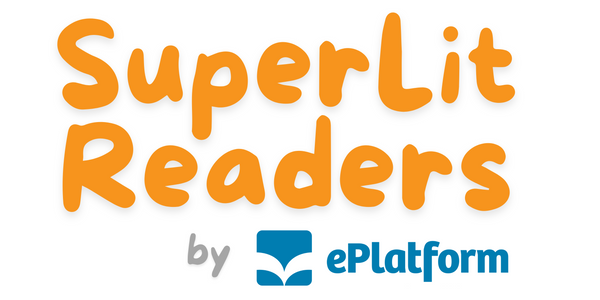Systematic Synthetic Phonics (Explained)

Overview of this Blog:
As we head into 2025, New Zealand is embracing a significant shift in how children learn to read through systematic synthetic phonics, leaving many parents and teachers searching for effective support tools like decodable readers and structured phonics programs. Research shows that children taught with systematic phonics are more likely to develop strong reading skills than those who aren't. This evidence-based approach is designed to give every New Zealand children the foundation they need to become confident readers.
In this blog, we'll break down everything you need to know about phonics—from what it actually is to how it's changing in New Zealand schools and why decodable readers are essential tools in this transition. We'll discuss how these updates affect students at different reading levels, and share practical, actionable tips for both parents and teachers on how to support children on their reading journey using proven phonics resources. Whether you're a teacher preparing for classroom changes or a parent wanting to help at home with quality decodable readers, you'll leave with the knowledge and tools to confidently guide children through this exciting new era of learning to read.
Table of Contents:
1. Phonics Basics: What is it?
2. What is 'Systematic' Phonics?
3. What is 'Synthetic' Phonics?
4. How Else is Reading Taught?
5. Phonics in 2025: What's Happening in New Zealand Schools?
6. How Do These Changes Affect Student?
7. What Does This Mean for Parents and Teachers?
8. How to Support Your Child's Phonics Journey in 2025.
1. Phonics Basics: What is it?
If you've ever heard the term "phonics" and wondered what it actually means, you're not alone. Simply put, phonics is a method of teaching kids to read by connecting sounds (phonemes) with letters (graphemes). It's like giving children the key to unlock words by breaking them down into their sound parts.
For example, in the word 'cat', phonics teaches children to identify and blend the sounds /c/, /a/, and /t/ rather than memorising the whole word. This approach to learning to read activates the brain's language centres more effectively than sight-word memorisation, according to recent research. Programs like ePlatform's SuperLit Readers are specifically designed to reinforce these phonics principles through engaging stories children can actually read.
This method helps kids decode (break apart) unfamiliar words by recognising the individual sound/letter components within a word, setting the foundation for solid reading skills that will support them throughout their academic journey.
2. What exactly is 'Systematic' Phonics?
Phonics, but with a plan! Systematic phonics is a structured approach to teaching reading, where the relationship between sounds and letters is taught in a specific, logical order. This means no guesswork for kids—each lesson builds on the last, giving them a clear path toward becoming fluent readers.
A systematic approach typically begins with teaching simple letter-sound relationships (like 's', 'a', 't', 'p') before progressing to more complex patterns (like 'sh', 'ch', 'igh'). This careful sequencing, as featured in quality decodable readers programs like SuperLit Readers, ensures that children master fundamental skills before tackling more challenging concepts. Research shows this reduces frustration and builds reading confidence by ensuring children have the tools to decode 95% of the words they encounter.
It's like taking kids on a step-by-step reading adventure where each new skill they learn empowers them to read more complex texts!
3. So, What is 'Synthetic' Phonics?
Synthetic phonics is where things get really exciting! This method teaches kids to blend individual sounds together to form words. Instead of memorising whole words, children learn to "synthesise" or put together sounds. For example, they'll learn the sounds /c/, /a/, /t/ and blend them together to read the word cat.
As children progress, they'll apply the same blending technique to more complex words like 'sh-i-p' to read 'ship' or 'm-a-th' to read 'math'. A 2021 study found that students taught using synthetic phonics demonstrated higher reading accuracy than those taught with alternative methods. ePlatform's SuperLit Readers are specifically designed to reinforce synthetic phonics skills by featuring words that children can successfully decode using the letter-sound relationships they've learned.
It's all about breaking words down into smaller chunks and then building them back up—a skill that empowers children to tackle new words with confidence!
Important to Note: The Systematic Synthetic Phonics approach has been used for many years to teach reading to those that suffer from learning difficulties, and the evidence shows it benefits ALL children learning to read.
4. How Else is Reading Taught?
While phonics is a superstar in the reading world, other methods have been used too. Some New Zealand schools have traditionally used a whole-language approach, which encourages kids to recognise words as whole units instead of sounding them out. Others use a balanced literacy approach, which combines phonics with broader language exposure, like reading full texts early on.
A landmark 2005 National Reading Panel study found that systematic phonics instruction produced significant benefits for students in K-6, especially for struggling readers. This research has prompted many New Zealand schools to shift away from whole-language approaches toward evidence-based phonics programs supported by quality decodable readers. Resources like ePlatform's structured phonics materials provide the tools teachers need to implement this proven approach effectively.
These alternative methods work for some children, but extensive research shows that systematic synthetic phonics is a game-changer for most students learning to read. This evidence-based approach is becoming increasingly popular amongst schools across New Zealand, with many states now adopting it as their primary literacy method.

5. Phonics in 2025: What's Happening in New Zealand?
In 2025, many New Zealand states and territories are transitioning to systematic synthetic phonics as the preferred approach for teaching reading in early primary years. This nationwide shift reflects growing consensus around evidence-based literacy instruction.
Schools across the country are implementing daily phonics instruction sessions, giving kids the strong foundation they need to thrive as young readers. Education departments are providing comprehensive phonics teaching materials, including decodable readers, sound charts, and assessment tools. Parents can supplement school learning with home resources like ePlatform's phonics program that align perfectly with New Zealand curriculum standards. Schools are also investing in specialised training for teachers to ensure consistent, high-quality phonics instruction.
The goal? To dramatically improve reading outcomes across New Zealand, ensuring that every child—no matter their background or location—can learn to read fluently and confidently using proven methods and quality resources.
6. How Do These Changes Affect Student?
For students, this nationwide shift offers a more structured, clear approach to learning how to read. By focusing on phonics from the start, New Zealand children will be better equipped to decode words, leading to improved comprehension and reading fluency.
Research from schools that have already implemented systematic synthetic phonics shows remarkable results: a significant increase in reading proficiency by the end of Year 1. The structured approach also helps identify reading difficulties earlier, allowing for timely intervention and support.
Struggling readers will receive the targeted support they need to catch up, and even confident readers will benefit from the clarity and consistency of a structured synthetic phonics program. What's really great is that this approach works for all students, regardless of their learning background. The explicit nature of synthetic phonics ensures that every child gets the foundational skills they need to learn to read successfully.
7. What Does This Mean for Parents and Teachers?
For teachers across New Zealand, this change means adapting to new resources, lesson plans, and teaching methods to effectively implement Systematic Synthetic Phonics. Many states are prioritising teacher support by providing ready-made, evidence-based teaching materials that align with the New Zealand Curriculum.
For parents, supporting your child's phonics journey can be simple and effective. Look for decodable readers from programs like ePlatform that match the phonics patterns being taught at school. Set aside 10-15 minutes daily for phonics practice at home—research shows this consistent reinforcement significantly boosts reading outcomes. Teachers can prepare by familiarising themselves with their state's curriculum requirements, exploring quality phonics resources like SuperLit Readers, and creating assessment systems to track student progress.
Gone are the days of memorising word lists; instead, you'll see your child breaking words down into sounds and blending them back together. You'll probably hear your little ones practicing sound patterns and playing with letters more than ever before—all essential skills as they learn to read through phonics!
8. How to Support Your Child's Phonics Journey in 2025.
As New Zealand schools embrace systematic synthetic phonics, parents and teachers play crucial roles in ensuring kids thrive. Whether you're in the classroom or at home, here's how you can help make phonics learning smooth and effective for every child.
For Parents:
- Daily Practice: Spend 10-15 minutes daily practicing phonics sounds using decodable readers that match what's being taught at school
- Sound Hunts: Play "I spy" with phonics sounds: "Can you find three things that start with /s/?"
- Create a Sound Wall: Display letters and corresponding pictures at home to reinforce phonics patterns
- Use Quality Resources: ePlatform's SuperLit Readers are specifically designed to reinforce school learning with engaging stories
- Celebrate Progress: Acknowledge when your child successfully decodes a new word—this builds confidence and motivation
For Teachers:
- Structured Lesson Plans: Implement consistent daily explicit phonics instruction using a systematic sequence
- Engaging Resources: Use ePlatform's Decodable Readers that align with New Zealand curriculum standards—check out our Scope and Sequence to learn more.
- Multi-sensory Activities: Incorporate movement, touch, and sound to cater to different learning styles
- Regular Assessment: Monitor progress carefully with systematic check-ins and adjust instruction accordingly
- Differentiation: Use the 10-levelled structure of programs like SuperLit Readers to match materials to each student's current ability
Classroom Implementation:
- Integrate engaging resources: Phonics might be structured, but learning doesn't have to be dull. Use decodable readers programs designed to align with evidence-based phonics instruction. ePlatform's Decodable Readers provide a comprehensive solution—check out our Scope and Sequence to learn more.
- Daily practice with variety: Effective phonics instruction requires consistent daily practice. Spice it up by incorporating group reading, sound-matching games, or decoding activities with books that captivate students' imaginations. Each and every title from ePlatform's Decodable Readers includes phonics-based worksheets, games, partner/group activities, teaching tips, and more!
- Monitor progress carefully: Every child learns at their own pace. Use regular check-ins and encourage students to engage with books by reading stories that match their interests. ePlatform's Decodable Readers 10-levelled structure makes it easy for you to keep kids on track, without overwhelming them. Plus, pick from Fiction or Non-Fiction genres with topics to match their interests.
— Happy Reading!




